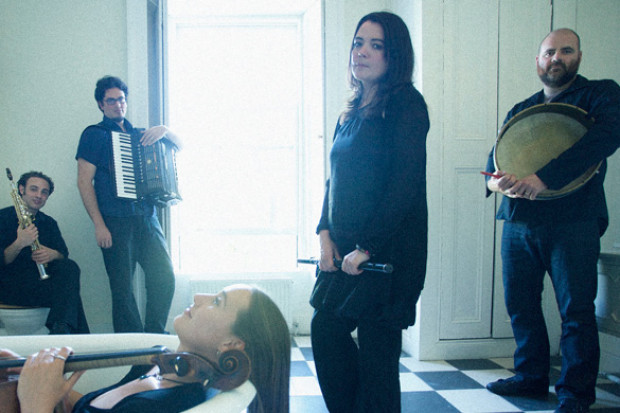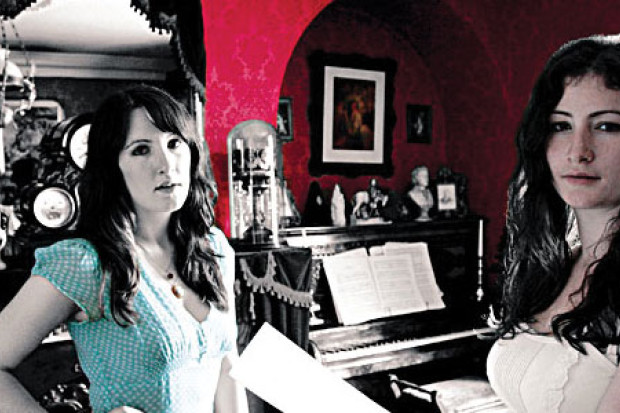CD Reviews: Séamus Quinn and Gary Hastings
Séamus Quinn and Gary Hastings
Slán le Loch Éirne – Stories to Tell
Cló Iar-Chonnachta CICD 152
This is very fine recording from two excellent musicians. Séamus Quinn and Gary Hastings played a lot of music together while they were both studying Irish at the University of Ulster in Coleraine in the late 1970s and early 1980s. Traditional music was exceptionally strong there at that time, and I remember being envious of the music scene which was available to Coleraine students then as there was relatively little going on, as far as traditional music was concerned, in Queen’s University, Belfast, where I was a student around that time. I remember going occasionally to sessions in Portrush and Portstewart, usually in the dead of winter for some reason, which were frequented by Coleraine students, and Gary and Séamus were among the mainstays of these gatherings, as was Ciarán Curran who accompanies them on this album. Ciarán is also the producer of this recording.
Gary and Séamus have long since left Coleraine and in the interim become clergymen in the Church of Ireland and the Catholic Church in County Mayo and County Monaghan respectively – a career path which few of their contemporaries, no more than themselves, would have predicted, it must be said. Fortunately, however, they have found the time to record an album that captures the many attractive nuances of their music.
Séamus comes from the Derrygonnelly area of County Fermanagh and as well as being absorbed in the musical tradition of that region he has a passionate interest in the music of the Sligo fiddle players Michael Coleman, James Morrison and Paddy Killoran. This influence is reflected in a number of the tunes he has recorded here. Coleman recorded ‘The Shaskeen Reel’ on no less than three occasions and Séamus has recorded an attractive version in the key of C on this album. In another track, which owes much to the recordings of the aforementioned Sligo fiddle masters, Séamus is joined by the County Leitrim fiddle player Charlie Lennon and they play Paddy Killoran’s version of ‘The Maids of Castlebar’ and ‘The Morning Star’. As well as playing the fiddle and providing the piano accompaniment on the album, Séamus also plays the accordion on a few tracks.
Mick Hoy and Eddie Duffy are among the Fermanagh musicians who most influenced Séamus and it was from Mick’s fiddle playing that Séamus learnt ‘Maho Snaps’, one of the nicest tunes on this recording. This jig takes its name from a number of bends and bumps which once existed in the road between Enniskillen and Belleek in County Fermanagh. Another Fermanagh fiddle player, Johnnie Maguire, is the source of ‘The Heel and Toe Polka’.
Gary Hastings is from Belfast and is among a number of excellent flute players who emerged from that city in the 1970s. Gary was responsible for bringing a number of tunes associated with Mick Hoy and Eddie Duffy to national prominence through radio broadcasts he made for The Long Note programme on RTÉ radio about twenty years ago. The music of County Fermanagh is one of the chief influences on Gary’s music and one of the musicians who made a big impression on him was the Bellinaleck flute player Cathal McConnell. It was from Cathal that Gary learnt two reels which he plays as a solo. The first is a version of ‘Down the Broom’ that McConnell learnt from his neighbour and mentor, P. Flanagan. The second, ‘The Gossoon’ that beat his father’, is often associated with the whistle player Johnnie Maguire from Callangh near Kilcogy in County Cavan, father of the legendary Belfast fiddle player Seán Maguire.
As well as being a tremendous exponent of the traditional music repertory of County Fermanagh, Gary is also an expert on the fifing tradition in Ulster and he brings a number of tunes from that musical genre to the fore in this recording. One of my favourite tunes on the album is the jig version of the fifing tune ‘Edward the Seventh’, which Gary acquired from the playing of the late Willie Nicholl from County Antrim. Gary and Séamus play it along with the well-known jig ‘The Lark on the Strand’ and this set is one of the best on the album as a whole. Another excellent track features two well-known reels, ‘The Old Copperplate’ and ‘Patsy Hanley’s’. The phrasing in both tunes leaves nothing to be desired and Séamus’ imaginative piano accompaniment highlights both the rhythmic and melodic charm of both reels.
I thoroughly enjoy listening to this CD and welcome it all the more in an era when so many traditional music releases are weighed down with bland, characterless newly-composed tunes which, thankfully, are as transient as they are awful. The repertoire featured on this album has a timeless quality and is afforded great respect by two wonderful musicians. All credit to Séamus, Gary and all concerned in the production of a memorable recording. This release is yet another feather in the cap of Cló Iar-Chonnachta whose output over the years has been remarkable.
Published on 1 September 2003
Robbie Hannan is an uilleann piper and is Curator of Musicology at the Ulster Folk and Transport Museum.












